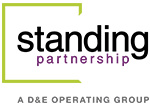Protecting Freedom to Operate: How Food Companies Can Navigate Growing Regulatory and Reputational Risks
The U.S. food industry has entered a period of heightened risk. Food companies need to take proactive steps to protect their freedom to operate.
The U.S. food industry has entered a period of heightened scrutiny and risk. Converging regulatory, activist, and consumer pressures may redefine how food is formulated, marketed and sold. While trends favoring “cleaner” and “healthier” foods aren’t new, what’s different now is the growing regulatory momentum at both federal and state levels.
The catalyst is Robert F. Kennedy Jr., the newly appointed Secretary of Health and Human Services and his Make America Healthy Again (MAHA) platform. Motivated by a stated desire to improve public health, MAHA questions the safety of so-called “ultra-processed foods”, which include food dyes, preservatives, sweeteners, seed oils as well as that of trace amounts of pesticides.
For food manufacturers and ingredient suppliers, the implications are sweeping with the potential to disrupt business models built on low-cost, shelf-stable scalable ingredients. It is not just consumer-facing brands that face these risks; they stretch across the entire value chain from ingredient suppliers to commodity processors. In this environment, protecting freedom to operate must become a strategic imperative.
Regulatory Headwinds Are Gaining Strength
The Food and Drug Administration (FDA) is reassessing its long-standing Generally Recognized as Safe (GRAS) framework, which currently allows companies to self-affirm the safety of new ingredients without mandatory FDA notification. While FDA strongly encourages GRAS notices, they are not required. If the GRAS pathway is restricted or eliminated, companies could face higher regulatory costs and delays in bringing products to market.
Recent bans on ingredients like brominated vegetable oil by the FDA and artificial food dyes by states such as West Virginia signal a broader trend. With up to 20 states considering similar legislation, the regulatory landscape is becoming fragmented. The resulting patchwork may require product reformulation, adding cost and regulatory complexity.
Misinformation Is Shaping Consumer Sentiment
Food and health are deeply emotional topics—making them particularly prone to misinformation. Companies looking to reassure the public of the safety of their products are running into high levels of skepticism and distrust of established authorities. At a time when science-based information is more needed than ever, the public prefers peer networks and social influencers, regardless of how accurate or scientifically grounded they are.
Four Actions Every Food Company Should Consider
1. Map your risks. Start by conducting a comprehensive risk assessment. Identify emerging threats across the full spectrum of stakeholders: regulators, legislators, value chain partners, influencers, customers, consumers and NGOs. Prioritize risks based on potential impact (financial, legal, reputational), likelihood and geographic exposure. Then, assess which ingredients, product lines, processes or sourcing practices that are most vulnerable. This exercise should be led by a cross-functional team empowered to define mitigation strategies and allocate resources.
2. Refresh and clarify your narrative. With distrust at record high levels, how you communicate matters more than ever. While changing the minds of a highly polarized public may be unrealistic, constructively correcting inaccuracies is not only appropriate but essential. A simple and relatable narrative that explains the role ingredients play in nutrition, shelf stability and affordability should be part of the communications toolkit of every food company. Support your message with credible third-party sources, e.g., the American Heart Association’s recent reaffirmation that seed oils help lower LDL cholesterol and support heart health. Given the rising popularity of alternatives like beef tallow, touted as a replacement for seed oils, it’s important to address misconceptions directly. While consumers are free to choose and some restaurants may switch to tallow, it simply cannot meet the volume capacity or affordability of seed oils – a reality that can serve as a strong proof point for oil processors and producers.
3. Practice Radical Transparency. A powerful way of combatting misconceptions about the food industry ‘hiding’ information about ingredients is radical transparency. Where feasible, share toxicology and safety data submitted to regulatory bodies. For self-affirmed GRAS determinations, consider publicizing the scientific rationale and risk assessments. If your business decides to take voluntary action to pre-empt regulatory restrictions or meet consumer preferences by reformulating products or removing certain ingredients, these voluntary steps can serve as reputational assets that should become part of your narrative.
4. Leverage Industry Coalitions. When an entire sector faces a significant risk, there’s power in numbers. This is the time to activate your engagement with trade associations and cross-industry groups to ensure the industry’s voice is coordinated and credible. A collective approach can amplify outcomes while shielding individual companies from standing alone in the public spotlight. Coalitions are especially effective for lobbying, funding independent research or communications efforts.
In a climate of uncertainty, agility is a competitive advantage. Don’t wait for the next regulation or headline to act. Companies that understand the risks, communicate clearly, and adapt their portfolios—on their own terms—will be best positioned to thrive regardless of what comes next.
Looking for a partner to help you protect your freedom to operate? Contact us at inquiries@standingpartnership.com.
